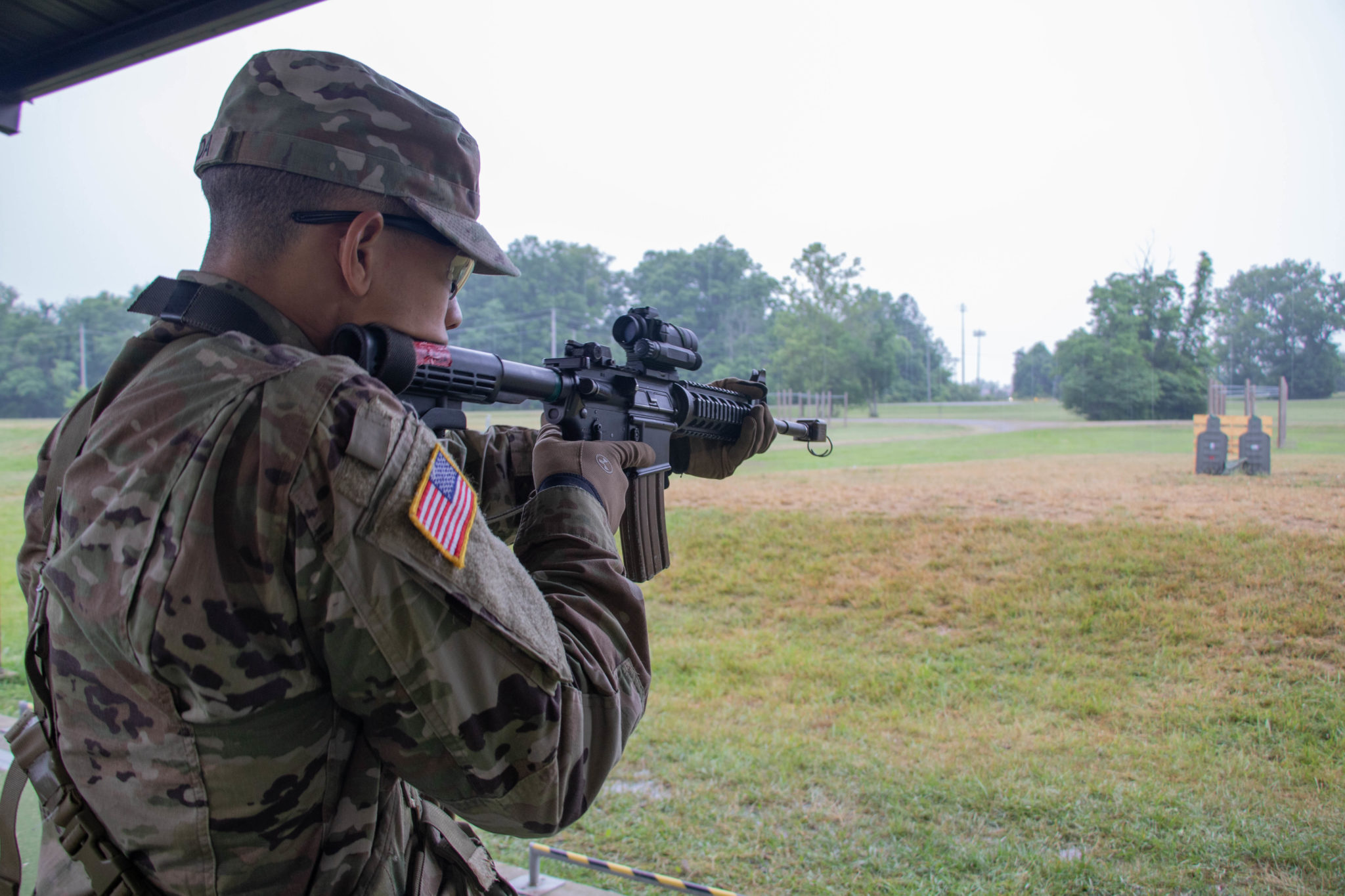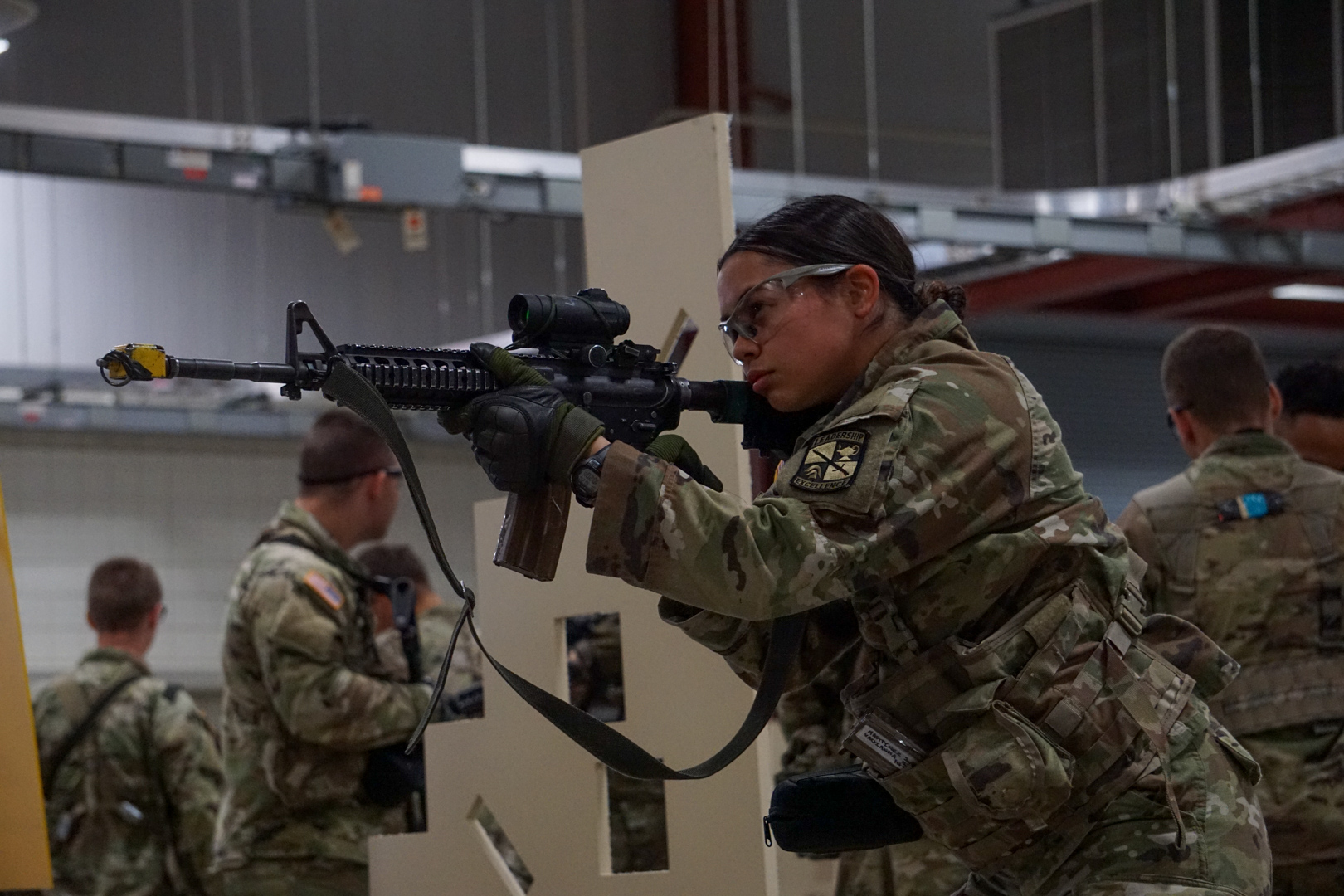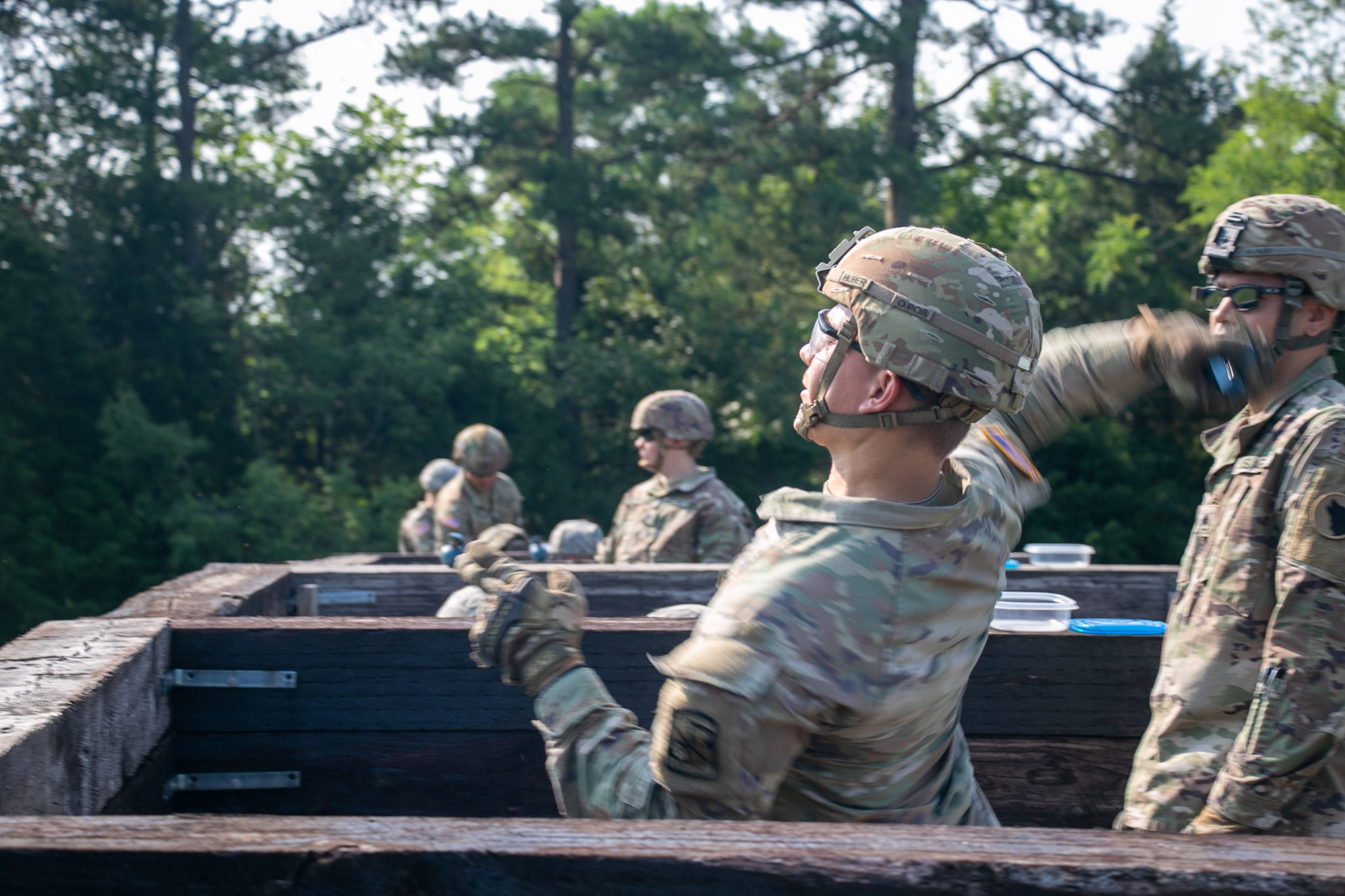FORT KNOX, Ky. – “Incoming!”
When Cadets hear that, they know to immediately repeat the message to warn their peers around them and hit the ground in a covered position. Seconds after, several loud and booming bangs are simulated through speakers to represent an enemy artillery round.
They then return to the mission at hand once they hear, “All clear!”

A Cadet moves from a high crawl position to regain cover during the Fire Team Development exercise at Christensen Range at Fort Knox, Ky. July 26. Photo by Roland Hesmondhalgh
The simulation helps the Cadets of 7th Regiment, Basic Camp remember to focus on everything going on in their surroundings, helping them to maintain situational awareness while implementing individual movement techniques (IMTs) to move from one end of the terrain to safely reach the other side.
The IMTs learned are the low crawl, the high crawl and the 3-5 second rush – a movement where the Cadet sprints as fast as they can between barricades before hitting the ground and regaining cover.
After learning these movements, the Cadets move in teams of two through an intense simulation where they choose which movements to use and when based on variables on the battlefield, known as METTTC: mission, enemy, terrain, troops, time and civilians present.
In addition to learning the necessary skills needed for combat situations, the exercise emphasizes the key value of communication, according to Specialist Joshua Wilson of Renton, Washington.
“When you’re in combat, you rely mostly on your battle buddy to your left and right. You want to make sure you’re communicating loud enough because when you’re down range, there could be artillery fire, mortar fire, weapons going off of all sorts on both sides.
“You have to be able to communicate well enough to be able to actually maneuver through the battlefield so you can keep your battle buddy safe and arrive at your destination and properly engage the enemy,” Wilson expressed.
Communication is what carried battle buddies Corderrious Stone of Alcorn State University and Jamerson Washington of Jackson State University through their lane on the course out at Christensen Range.
Since the first day of training, the Memphis natives have been battle buddies. It wasn’t until this exercise that they realized how vital communication is in pressing situations.
“In a time of combat, you really can’t afford for any mistakes or slipups,” Cadet Stone said. “Communication is key because you’re letting your battle buddy know you got his back no matter what. When he’s moving, I’m letting him know I’ve got him covered.”

Cadet Corderrious Stone of Alcorn State University moves from one barricade to another while performing a 3-5 second rush during Fire Team Development on Christensen Range at Fort Knox, Ky. July 26. Photo by Roland Hesmondhalgh
“If you don’t communicate, someone can get hurt – you can get hurt. You have to be a voice to prevent casualties,” Washington added.
In addition to communication, Stone says it’s important to motivate one another no matter how challenging it gets.
With refined combat and communication skills in their possession, Stone and Washington both say that they are more than motivated to move forward with training this summer to eventually serve the people of the United States.
Cadet Summer Training will bring 8,200 Cadets through Basic and Advanced Camp this summer on Fort Knox. These camps are designed to help challenge, grow and improve various skills and leadership qualities within the Cadets. If you think you have what it takes to be a Cadet or if you are interested in a job after college, click the following link: https://my.goarmy.com/info/rotc1/index.jsp?iom=IP08-AUTO-R1NA-BR-XXX-XX-XXX-MO-XX-X-BRCMAC:IP08




